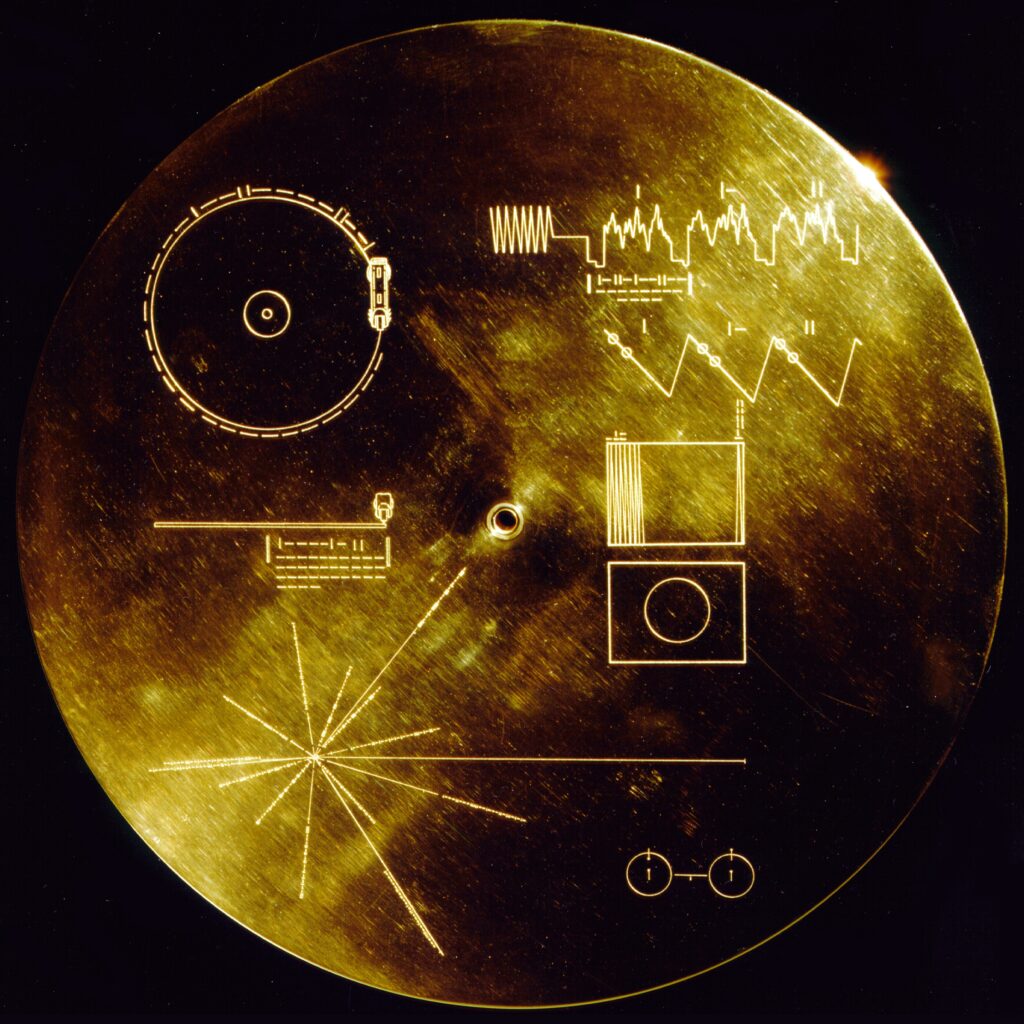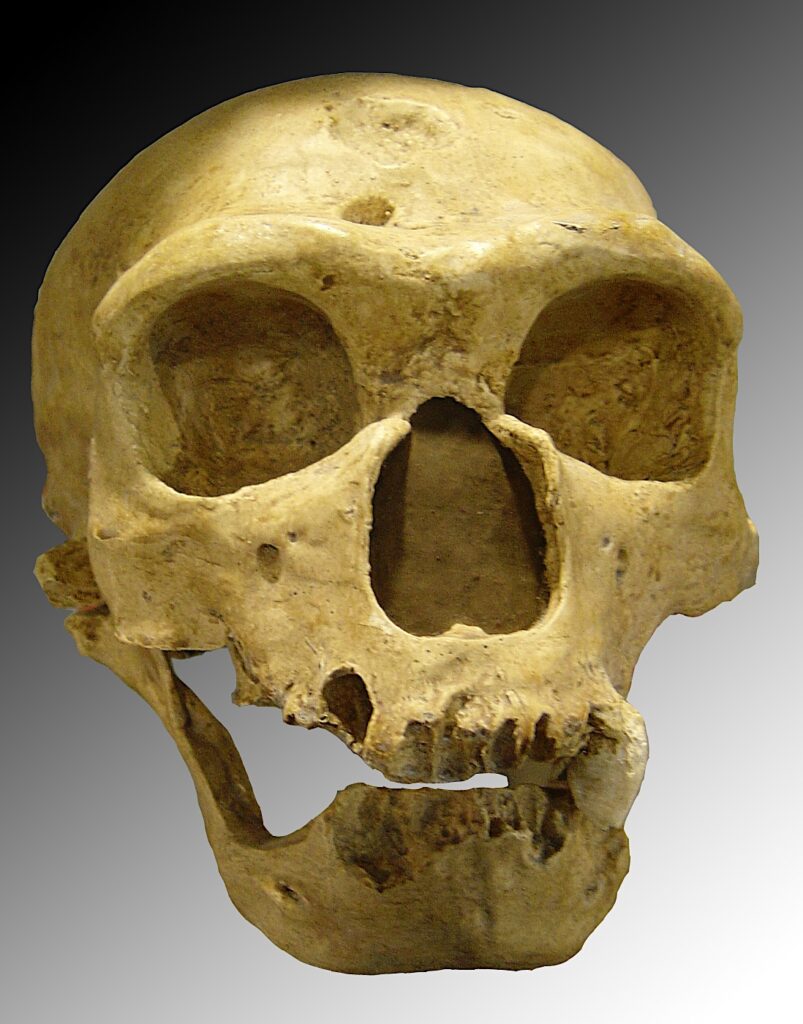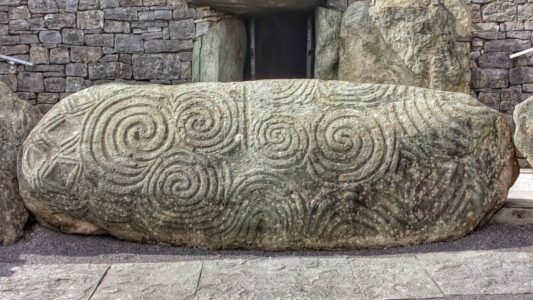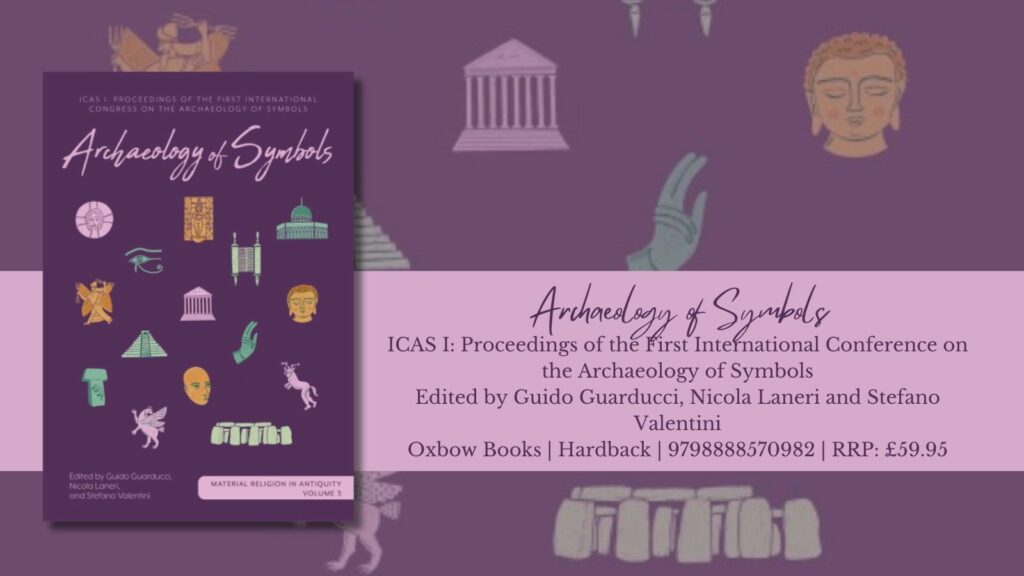Here is your sign to learn more about what makes humans ‘symbolic animals’.
In this blog, Guido Guarducci, co-editor of Archaeology of Symbols, explores the ways in which people have used symbols throughout history, and continue to do so today, highlighting how this can increase our knowledge of our past.
By Guido Guarducci | 2.5 min read
In 1977 NASA activated the Voyager Program by sending two probes, Voyager 1 and Voyager 2, into outer space in order to collect data from the most distant planets of our system. In addition to that, the probes had another scope. Each of them in fact hosted on board (and still host since as of today we know that they are still traveling in interstellar space and sending back data) a golden phonographic record containing playback instructions as well as images, music and sounds of the Earth and its species. Images containing data, drawings and also photographs of people, animals, etc.

NASA/JPL, Public domain, via Wikimedia Commons
All these features engraved on the records represent and are communicated in the form of symbols, symbols of our identity, our knowledge and our cultural and natural environment. This also includes the sounds and the photographs, which are certainly mere representations, but at the same time symbolically charged elements since they were carefully chosen for distinctive reasons and to convey specific meanings to possible alien civilizations.
The records represent a unique example of how we have decided to communicate what we are, what is important for us, to those that know nothing about us and that are probably nothing like us. In fact, the message and how to ‘read’ it, in other words its semiotic value, are encoded, hence exclusive. Carl Sagan, astronomer, science writer and chair of the NASA committee that selected the contents of the records and the way they should be communicated, stated that “the spacecraft will be encountered and the record played only if there are advanced spacefaring civilizations in interstellar space”. Moreover, although characterized by different purposes, the process of decoding and understanding ancient symbols in archaeology, shows strong resemblance to the Voyagers’ message and those who will have to deal with it, in particular the interpretation of the symbolic aspects of our human ancestors in prehistoric times.

The human mind, i.e. the mind of Sapiens, but also, with minor impact, that of our ‘cousins’ Neanderthals and perhaps of our common ancestor Heidelbergensis, has set us apart from all the rest of the living creatures on our planet in particular due to its capacity for abstraction, transcending immediacy (time) and materiality (space). Symbols are one of the main means by which we think, imagine, create, communicate as well as understand and manipulate other symbolic structures. For these reasons the German philosopher Ernest Cassirer defined humans as ‘symbolic animals’ (E. Cassirer, 1944, Essay on man, a summary of his earlier works, published between 1923 and 1929).
Our symbolic behavior has left through time an abundance of tangible results, the material embodiment of part of that symbology. The reason and significance associated with these objects or contexts may be hidden or patent, according to our own contemporary ‘symbolic toolkit’. Hence, one of the main goals of archaeology, and its anthropological lens, is to detect, document and possibly decode and finally interpret these symbols to increase the knowledge of our past.
The aim of the ‘Archaeology of Symbols’ volume, and in particular the ICAS (International Conference on the Archaeology of Symbols) behind it, is to create a common ground for symbolic analysis formed by various geographic and chronological context in order to foster information exchange and perhaps create new avenues of interpretation. The interaction during the scientific event and the proceedings contained in the book represent a quite interesting sample of this approach and a further step in the comprehension of the ‘symbolic animal’.
Archaeology of Symbols is available now from the Pen and Sword Books website at a special price for a limited time only.
Special Price: £47.96
Featured image credit: Jal74, CC BY-SA 4.0 https://creativecommons.org/licenses/by-sa/4.0, via Wikimedia Commons


 Follow
Follow